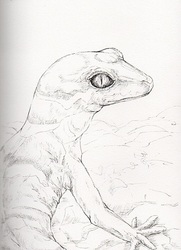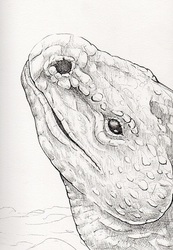Sign In
CloseTotem of the day is Meerkat! The closeness of family and friends will be important in the coming time so be sure to spend time with those you consider close to you and allow yourself to put your trust in them. If you have been looking for a solution to a problem, this is a sign to work harder at digging for the answers for it won't be right on the surface. Don't speak about goals you are working on until you have completed them. It may also be beneficial to spend time in the morning soaking in the sunrise. The Meerkat spirit guide is known for it's connection to protection, observation, society, awareness, and feminine energies. When Meerkat appears, it can sometimes be a sign that danger is coming, but to be aware that you are protected by Meerkat. At times, this can also be a sign to look at the relationships in your life. It may be a time to work on strengthening the bonds of your friendships or to look to your family for guidance. Instill more joy and laughter into any social groups you are a part of. Be aware of your surroundings for you may also need to rid yourself of relationships that are harmful to you. Meerkat also reminds us to use our intelligence and awareness to look for opportunities ahead of us. Found only in Africa, Meerkats can be seen in African folklore such as a tale from the Bavenda, a Bantu tribe from Southern Africa. This tale speaks of our the meerkat gave the animals their colors by saying that anyone who would bring it food would receive their markings from the meerkat. People who connect with Meerkat are social creatures often found within the company of close friends and family. This includes a skill at keeping in contact with others through regular communication and networking. These individuals possess a strong connection to earth and are generally well-grounded with an intelligent nature able to learn quickly.
Meerkats, Suricata Suricatta, are carnivorous mammals belonging to the Civet and Mongoose family that can live up to 14 years in the wild. Meerkats are the only members of the genus Suricata and can only be found in southern and western Africa. They are found in desert and scrub land habitats within the Kalahari Desert throughout five different countries of Africa. These small mammals are known for their long, slender bodies with a black-tipped tail that can reach double their body length, short and flat ears, ability to stand on their back feet, and the dark patches around their eyes. The average adult Meerkat reaches around 11 inches from head to rear with an additional 7 to 9 inches of tail and a weight of around 2 lbs. There are 3 subspecies of Meerkat: the Angolan Meerkat native to southwestern Angola, the Desert Meerkat found throughout the Namib desert, central, and northwestern Namibia, and the Southern African Meerkat native to Southern Africa, Namibia, and Bostwana. Unlike other Mongoose species, these creatures are known for their greatly social habits. Meerkats form communities called gangs, clans, or mobs which can number from only 3 to up to 50 meerkat individuals with a dominant female leading the community. At times, these communities can even go to war over territory although they prefer to avoid warring in order to prevent casualties. To do so, they will rely more on intimidation tactics to avoid physical fights. Living in a large community is beneficial to meerkats because this enables a portion of the clan to stay behind and protect the territory and offspring while others are out foraging. These animals are diggers, possessing strong digging claws and a membrane that covers their eyes while digging. Meerkat clans live in complex tunnels called burrows that can have up to 15 different entrances and exits and reach over 6 feet deep. These burrows allow them to escape predators and the heat of the day. At the beginning of each day, Meerkats will spend time in the rising sun relaxing or grooming one another while one watches for predators. Each hour, this individual is replaced with another to watch. If a predator is spotted, they will bark an alarm that sends the clan diving for tunnels. Unlike other burrowing animals, Meerkats will actually have multiple burrows they will switch between on occasion. The diet of a Meerkat consists of lizards, bugs, birds, and fruits. They possess a mild immunity to scorpion venom that enables them to eat scorpions as well. However, mothers will still bite off the stinger of a scorpion before giving it to the young to eat. They have an excellent sense of smell that allows them to find and dig for prey. When reproducing, there may be multiple breeding pairs in the clan, however they are generally led by one dominant breeding pair. A single female can give birth to between 2 and 5 babies called pups that are born blind and fur-less. Kept in a grass-lined chamber, they are reared by the entire clan. The dominant female will even have other clan females nurse her young. Females are also able to nurse while standing up so that they can care for young while standing guard. When playing around the burrow, the pups will often have a babysitter watching nearby. Weaning occurs by 9 weeks and will become fully mature by a year and a half old.
Submission Information
- Views:
- 354
- Comments:
- 0
- Favorites:
- 1
- Rating:
- General
- Category:
- Visual / Traditional




